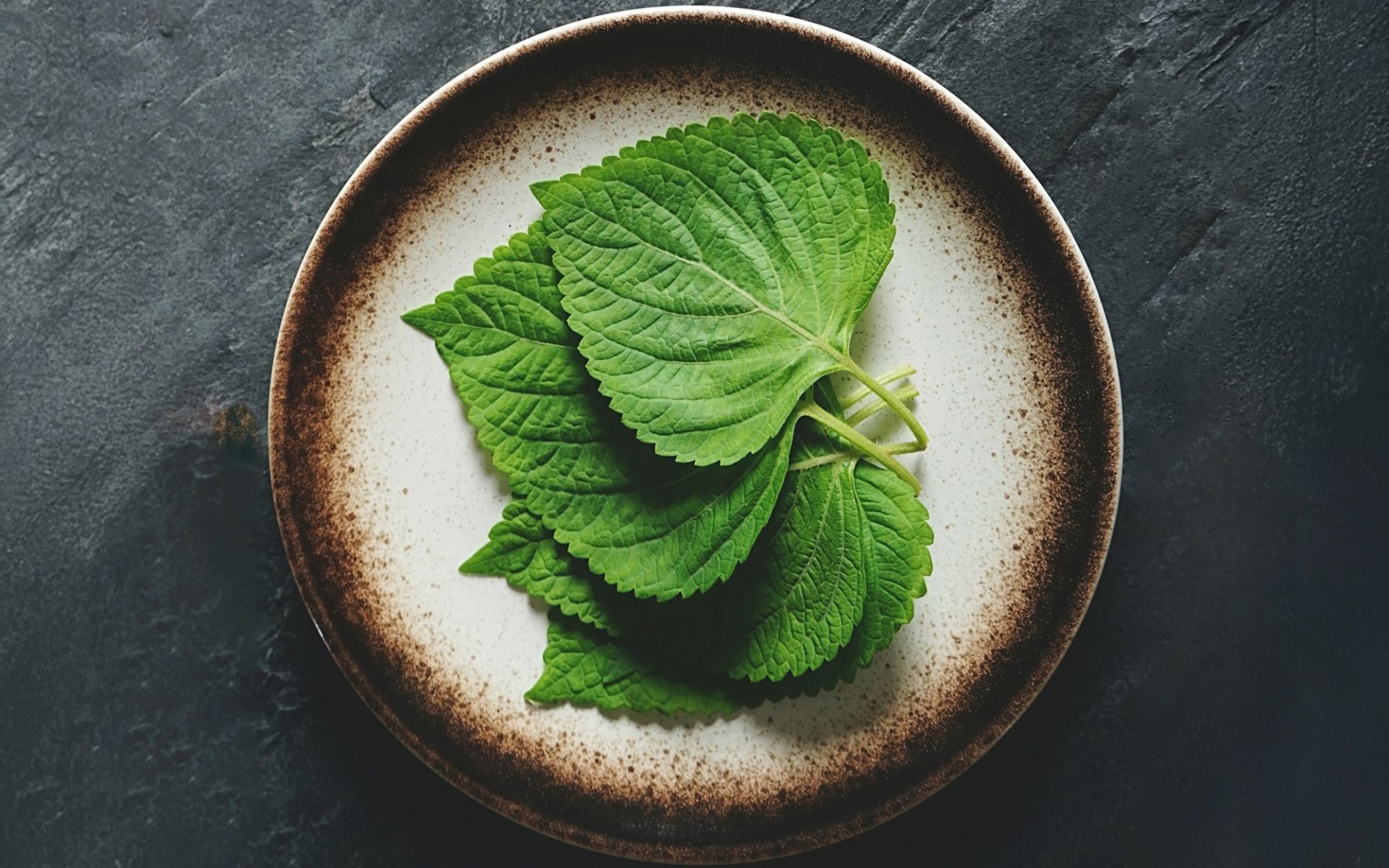Oba Leaves

Oba Leaves Or Shiso Leaf is a renowned herb that has been part of Asian culinary culture for centuries, especially in Japanese and Korean traditions. Shiso leaves are widely used in cuisine, often served with raw fish and grilled meat dishes.
Botanically, shiso leaf belongs to the same family as holy basil, sweet basil, and mint. It originated in East Asia, where it's most commonly found in Japan, Korea, and China. It is a vegetable with a distinctive pungent aroma. In Thailand, it is known as "Bai Nga Khi Mon."
History: From Ancient Chinese Medicine to the Silk Road
The history of using shiso leaf in cooking can be traced back to China, one of the first countries to consume it. In China, shiso leaf is known as Bai Sisu. At that time, it was highly regarded for its medicinal properties, used to treat ailments like asthma, coughs, and indigestion. It was also used in traditional Chinese medicine to help induce sweating and relieve muscle spasms.
Shiso leaf was first documented in a medicinal recipe during the Song Dynasty in a book called "Taiping Huimin Hejiju Fang," written in 1110 BCE. It then spread along the Silk Road trade routes to other regions throughout East and Southeast Asia.
Shiso in Japan and Korea: Unique Charms in Each Culture
In Japan, shiso leaf began to gain popularity during the Tang Dynasty, when Japanese monks returning from China brought shiso seeds back with them. It was then cultivated widely. Over time, shiso quickly became popular in Japan, being grown for both culinary and medicinal use.
In Japanese cuisine, shiso leaves are often used as a garnish and eaten with sushi or sashimi. Its unique pungent scent helps to neutralize the raw smell from seafood. It is also rich in nutritional value and looks beautiful as a garnish, making the food more appealing. Besides being eaten fresh, shiso leaves can also be used to make pickled vegetables, sauces, and tea. In traditional Japanese medicine, shiso is brewed into a tea to treat digestive problems and prevent food poisoning.
In Korea, shiso leaves are a common ingredient in everyday meals, often used to wrap steamed rice and grilled meat to be eaten together. Additionally, Korea has another popular dish: Ggaenip-kimchi (깻잎김치), a kimchi made from shiso leaves, with a unique aroma and flavor and a soft texture that differs from fresh shiso.
Shiso also has a long history of use in traditional Korean medicine, similar to other East Asian countries. Koreans believe that shiso helps relieve respiratory issues like asthma and bronchitis.
Versatility and Abundant Benefits
Today, shiso leaf remains widely popular around the world for its culinary and medicinal properties. It can be eaten both raw and cooked, such as in stir-fries, grills, fried dishes, or soups. It's used to wrap rice, grilled meat, sushi, and many other foods. The flavor of shiso pairs well with chili, garlic, soy sauce, tofu, grilled meats like fish, chicken, and beef, as well as oranges, plums, green tea, and soft cheeses. It can truly be called a versatile vegetable that offers both delicious flavor and immense medicinal benefits.


